Scientists report that they have developed a method that cuts down the time it takes to make new 'parts' for microscopic biological factories from 2 days to only 6 hours.
Feb 1st, 2013
Read more
New method allows plant biologists to 'capture' and sequence the DNA of hundreds of complete chloroplast genomes at 1 time.
Jan 31st, 2013
Read more
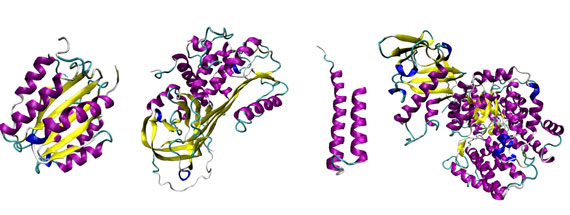 The evolutionary history of proteins shows that protein folding is an important factor. Especially the speed of protein folding plays a key role.
The evolutionary history of proteins shows that protein folding is an important factor. Especially the speed of protein folding plays a key role.
Jan 31st, 2013
Read more
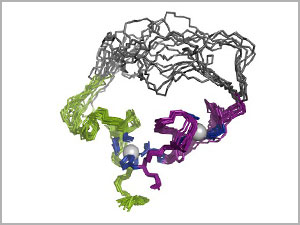 There's a wobbly new biochemical structure in Burckhard Seelig's lab at the University of Minnesota that may resemble what enzymes looked like billions of years ago, when life on earth began to evolve - long before they became ingredients for new and improved products, from detergents to foods and fuels.
There's a wobbly new biochemical structure in Burckhard Seelig's lab at the University of Minnesota that may resemble what enzymes looked like billions of years ago, when life on earth began to evolve - long before they became ingredients for new and improved products, from detergents to foods and fuels.
Jan 30th, 2013
Read more
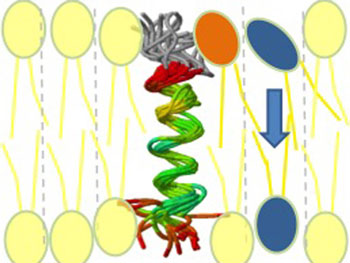 Biomembranes consist of a mosaic of individual, densely packed lipid molecules. These molecules are formed inside the cells. But how do these building blocks move to the correct part of the membrane? Researchers from Technische Universit�t M�nchen (TUM) have discovered a mechanism to show how this is done.
Biomembranes consist of a mosaic of individual, densely packed lipid molecules. These molecules are formed inside the cells. But how do these building blocks move to the correct part of the membrane? Researchers from Technische Universit�t M�nchen (TUM) have discovered a mechanism to show how this is done.
Jan 30th, 2013
Read more
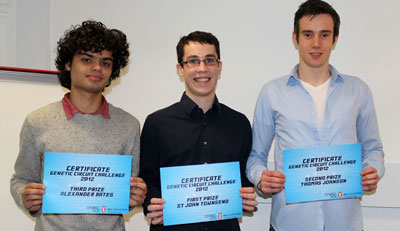 UCL's SynBioSoc announced the winner of their 2012 Genetic Circuit Challenge, an engineering design competition using life science 'ingredients' and sponsored by UCL Engineering.
UCL's SynBioSoc announced the winner of their 2012 Genetic Circuit Challenge, an engineering design competition using life science 'ingredients' and sponsored by UCL Engineering.
Jan 30th, 2013
Read more
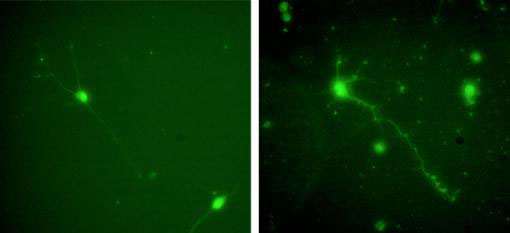 A protein associated with neuron damage in Alzheimer's patients provides a superior scaffold for growing central nervous system cells in the lab. The findings could have clinical implications for producing neural implants and offers new insights on the complex link between the apoE4 apolipoprotein and Alzheimer's disease.
A protein associated with neuron damage in Alzheimer's patients provides a superior scaffold for growing central nervous system cells in the lab. The findings could have clinical implications for producing neural implants and offers new insights on the complex link between the apoE4 apolipoprotein and Alzheimer's disease.
Jan 29th, 2013
Read more
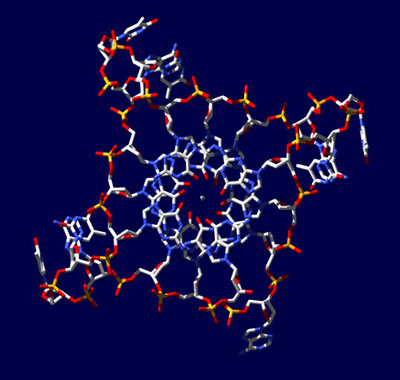 60 years after Watson and Crick's ground breaking paper described the double helix structure of DNA, researchers at the University of Cambridge have observed four-stranded DNA structures within human cells. The discovery could open the door to novel cancer therapies and a new era for personalised medicine.
60 years after Watson and Crick's ground breaking paper described the double helix structure of DNA, researchers at the University of Cambridge have observed four-stranded DNA structures within human cells. The discovery could open the door to novel cancer therapies and a new era for personalised medicine.
Jan 29th, 2013
Read more
Scientists have developed a way to grow iron-oxidizing bacteria using electricity instead of iron, an advance that will allow them to better study the organisms and could one day be used to turn electricity into fuel.
Jan 29th, 2013
Read more
Scientists from Karolinska Institutet in Sweden have made progress in understanding how human genes are regulated. In their study they have identified the DNA sequences, which bound to over four hundred proteins controlling the expression of genes.
Jan 28th, 2013
Read more
Vanderbilt biochemists have discovered that the process bacteria undergo when they become drug resistant can act as a powerful tool for drug discovery.
Jan 25th, 2013
Read more
In biology, molecules can have multi-way interactions within cells, and until recently, computational analysis of these links has been "incomplete," according to T. M. Murali, associate professor of computer science in the College of Engineering at Virginia Tech. His group authored an article on their new approach to address these shortcomings.
Jan 25th, 2013
Read more
After years of experimentation, researchers at the University of Arkansas have solved a complex, decades-old problem in membrane biochemistry. The consequence of their work will give scientists more information about the function and structure of proteins, the workhorses within the cells of the human body.
Jan 24th, 2013
Read more
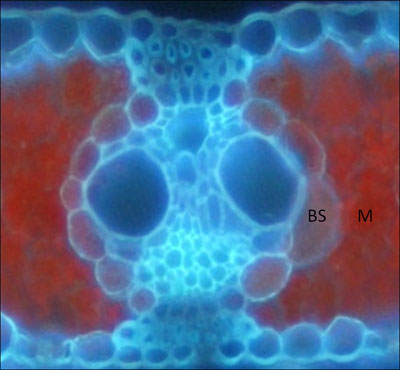 With projections of 9.5 billion people by 2050, humankind faces the challenge of feeding modern diets to additional mouths while using the same amounts of water, fertilizer and arable land as today. Cornell researchers have taken a leap toward meeting those needs by discovering a gene that could lead to new varieties of staple crops with 50 percent higher yields.
With projections of 9.5 billion people by 2050, humankind faces the challenge of feeding modern diets to additional mouths while using the same amounts of water, fertilizer and arable land as today. Cornell researchers have taken a leap toward meeting those needs by discovering a gene that could lead to new varieties of staple crops with 50 percent higher yields.
Jan 23rd, 2013
Read more
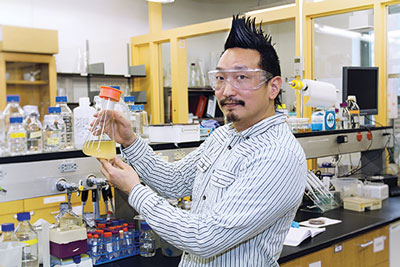 Scientists at the SUNY College of Environmental Science and Forestry (ESF) are developing a biochemical process that uses a protein molecule to disrupt the process by which bacteria become virulent, a finding that could have widespread implications for human health.
Scientists at the SUNY College of Environmental Science and Forestry (ESF) are developing a biochemical process that uses a protein molecule to disrupt the process by which bacteria become virulent, a finding that could have widespread implications for human health.
Jan 23rd, 2013
Read more
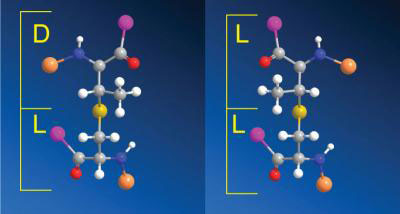 While working out the structure of a cell-killing protein produced by some strains of the bacterium Enterococcus faecalis, researchers stumbled on a bit of unusual biochemistry. They found that a single enzyme helps form distinctly different, three-dimensional ring structures in the protein, one of which had never been observed before.
While working out the structure of a cell-killing protein produced by some strains of the bacterium Enterococcus faecalis, researchers stumbled on a bit of unusual biochemistry. They found that a single enzyme helps form distinctly different, three-dimensional ring structures in the protein, one of which had never been observed before.
Jan 22nd, 2013
Read more
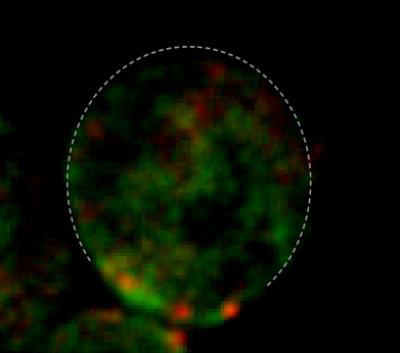 Sticky spots on cell membranes hold onto the master regulator of cell polarity, helping to ensure that the regulatory protein accumulates in high enough concentrations to trigger cell polarity.
Sticky spots on cell membranes hold onto the master regulator of cell polarity, helping to ensure that the regulatory protein accumulates in high enough concentrations to trigger cell polarity.
Jan 22nd, 2013
Read more
A new metabolic engineering tool that allows fine control of gene expression level by employing synthetic small regulatory RNAs was developed to efficiently construct microbial cell factories producing desired chemicals and materials.
Jan 20th, 2013
Read more

 Subscribe to our Biotechnology News feed
Subscribe to our Biotechnology News feed








